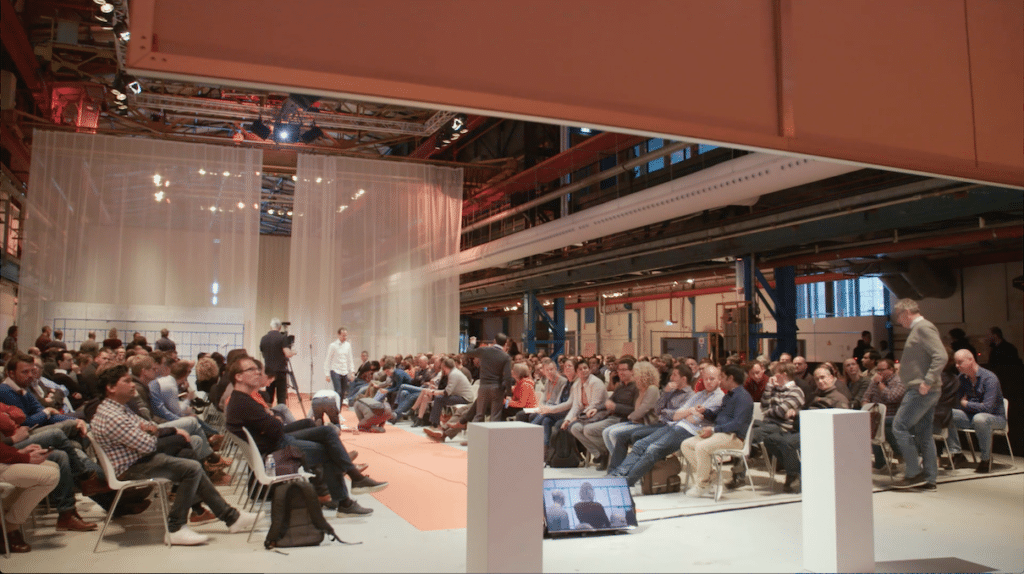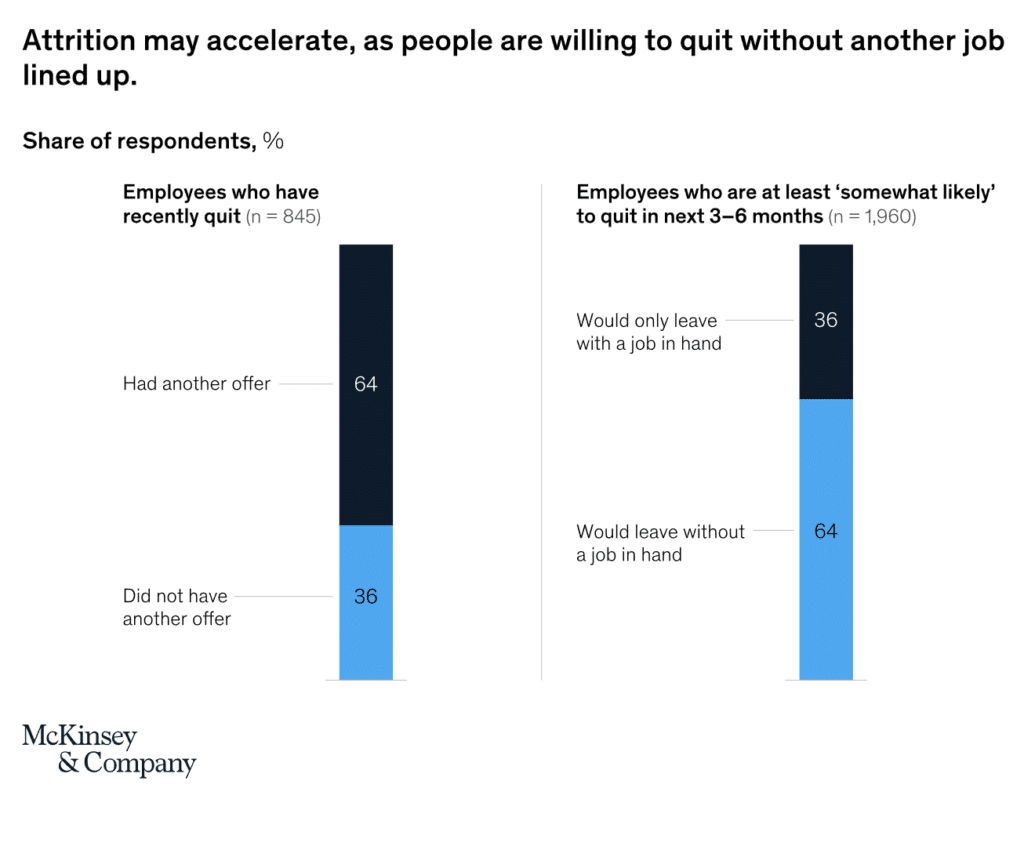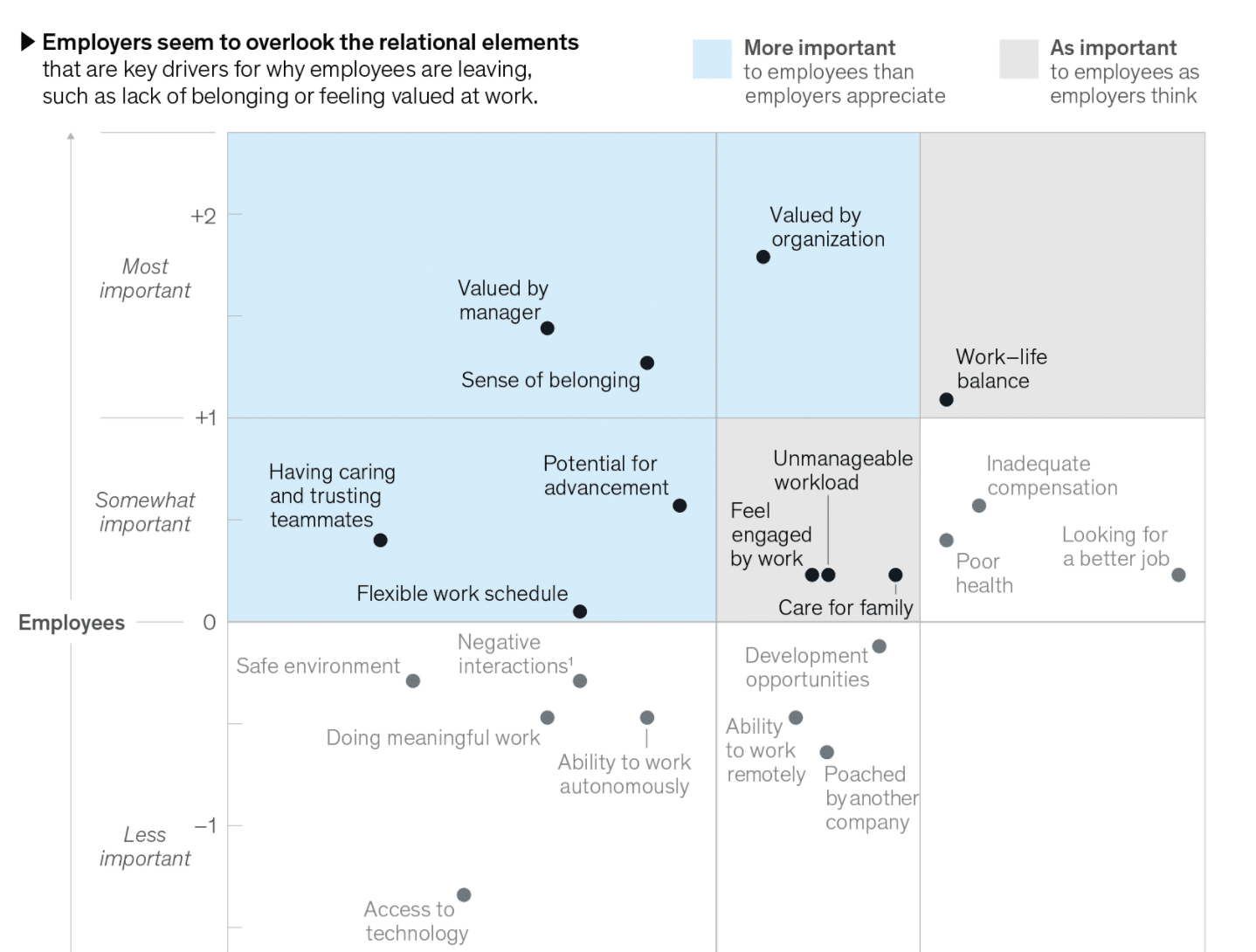

February 2, 2023
Culture of Chaos ,Great cultures ,Vision

Employee Engagement has always been the talk in HR and culture circles. And I’m glad that’s the word rather than “happiness.” I think we’re all responsible for our own happiness. But leaders can create a very engaging work environment. In some of the strongest work cultures, people aren’t always having fun, but they always care. They’re dedicated, and they’re focused. They act like they’re owners of the business.
Employee Engagement is not surveys (that usually just stay in Google Docs).
It’s not get-to-know-you games.
It’s not gifts and recognition.
It’s simply real and honest conversation.
That said, it needs a structure to create safety for the truth to emerge. The best way I know is an open source format that anyone can use. It’s called Open Space. Check it out…
www.OpenSpace.events You can follow the manuals there, or I’m happy to run an Open Space (and train you to do it without me). It can even be done virtually.
October 6, 2021
Culture of Chaos ,Uncategorized ,Vision
 This started out as a post about the Great Resignation. We may see most people exit the workforce for one reason or another.
This started out as a post about the Great Resignation. We may see most people exit the workforce for one reason or another.
People have become used to government payments, staying at home, and they’re unwilling to tolerate poor working conditions. Others are opposed to medical policies. And some are simply re-thinking their life. If they put their new checks into investments at the beginning of this year, then they really have flexibility.
So what does this mean?
And if you’re looking for a company engagement survey to save you, you’re about six months too late.
Now… don’t panic.
Why? Well for one, it never works. No one ever looked back and said, “I’m glad I completely freaked out and lost my shit over that.” If anything, it’s the actions they took as a result that made the difference.
It reminds me of a story about big wave surfers. When they are under a 60 foot wave, and can’t get back to the surface, they may be pummeled by yet another wave. And even though they can hold their breath for five minutes, it still might not be enough. So what’s the first thing they do? Relax.
Yes, relax. Because it’s a simple equation. If they freak out, then their heart beats fast and uses up all of their oxygen then they’ll die. The only chance they have to survive, is to be calm. So point 1…
You secure your own mask before helping your baby. Why? So you don’t pass out in the process. Take a look at your own life. Are you taking care of the basics. That really comes down to eat, sleep and exercise. Establish your baseline, so that you can get a clear emotional perspective.
The second reason not to panic is because things are far worse than you think. (Didn’t see that coming, did you?). Yes, we’re talking a sea of converging issues – A potential global debt collapse. Supply line issues that could leave people starving. Tense foreign. A President who isn’t “all there.” I could go on… In other words, we’re in a cesspool of struggle with no strong leadership.
So why on Earth would I turn up the pain on you this way?
Because a slow boiling frog dies. Turn up that burner and the frog jumps out. So let me say the second step, which you might find familiar.
What this means is a very personal choice. But make the choice. It can be as little as having a couple months of food and water, or it can mean all out prepper survival. The big question is really, what would help you sleep at night? For me, it’s a few things:
a) Three months of food and water
b) Back-up generator
c) Cash on hand
d) Taking money out of the market and into gold
e) Personal protection
Depending on who reads this, this will sound like too much or too little. But the question is this:
As a leader, you want to get there, so that everything coming out of your communications is from a place of confidence in your own safety so that you can give that safety to others.
You may even consider sharing your plans or helping them do the same. We have a lot of loyalty to those who truly look out for us.
Most of what your people are thinking is either happening between employees, or even worse, in their own heads. Much like the way you gain control of a car by turning in the direction of the skid, you want to actually want to authorize and create space for these conversations. The best tool I know for this is open space, or on a small team, it’s called lean coffee.
All it takes is a simple question and the freedom and safety to have any conversation. The question could be as focused as hitting a key crucial target, or as simple as
“What do we do now?” or “How can we be ready for anything?”
The amount of relief alone from talking this freely will do wonders.
Beyond that, people make new connections, and have new ideas you wouldn’t have even imagined. This is a far different experience than what they’re used to: Sitting in a conference hall in the dark while executives give an “inspiring” speech about the future.
Luckily, most of the things people want are within your control. (See that upper left corner)

You’ll get to read the results of these sessions and see which ones you want to empower. You’ll see what experiments you can run. You can consider new pivots in products or business lines. (Contact me about “How to Disrupt an Industry” if you’d like to know more).
It’s time we realized that life is not going back to normal. Even once the chaos ends, we’re looking at a new world by the end of this chaos.
Does this scare you? Good. Let’s turn that fear into excitement.
March 1, 2021
Culture of Chaos ,Vision
When Pinterest pays $90 million dollars to get out of a lease (and this somehow registered as good business), then you know things are changing.
Companies that don’t need to go back to the office won’t. They’ll invest in off-sites on a yearly or quarterly basis to align their teams. Some will have small offices with a lot of meeting rooms, kitchens and creative spaces. Other than that, it’s all about getting better at defining the remote work culture.
Calling it “remote work” actually hurts the company because it enforces the notion that we’re all alone. A better term to use would be distributed workforce, or the networked company.
Whatever you call it, the shift has actually exacerbated any problems a company had before the pandemic. Bad meetings are now intolerable. Unclear accountabilities are now pain points. Defining roles, responsibilities, expectations and boundaries are extremely important now.
September 14, 2020
Great cultures ,Hacks ,Vision
Alignment is the name of the game, but as you may know from my book, The Culture Blueprint, you can’t force anyone or it will not work. Alignment is about a) making the vision clear and b) removing the obstacles to create a true option.
Here is how you do it:
I thought of this on the spot when I met with a leadership team that was arguing. I was amazed that the acronym spells my name.
Do you have a request of someone else on the team, or the entire team? The more specific the better. This can be for resources, permissions, or anything else.
Someone may feel they are undervalued and want to participate more. In this case they can offer time, people or resources to anyone else.
Do you have a boundary that is being crossed? This can be a limit in spending, or use of your team, or a policy or a principle.
3. Go Around the Table
Ask if each person is all-in. If they are, go to the next. If not, ask them to consider one of the following:
Once they do this, and the element is agreed upon by the respective person they address, you then ask again: Are you all-in?
This may take several rounds because new things can come up, or someone may have a new offer once they hear another’s request.
July 20, 2018
Tools ,Values ,Vision

You’ve probably heard this one…
The story about the company that was so excited to bring in the new intranet software so they could finally get everyone on the same page, share knowledge, stay up to date and unify the company, and then… no one used it.
Something happened when we started using the word “Human Capital.” It used to be called “Personnel” – as in real people. But companies got so big that people became numbers. We then start to track them, count them and trade them like they’re any other resource. Just one of several cogs in the machine.
People are emotional, irrational, passionate and full of surprises.
Some will read that and be terrified by that statement.
Others will know that this is the source of innovation, fun and ingenuity that make work exciting and that enable us to solve the world’s biggest problems.
Now that more and more companies understand it’s all about the culture, along come all the people who think software can run the show. Graphs, numbers, input/output, dashboards….
“Ahh, I finally have the feeling that I’m in control of the people situation!”
Guess again.
To be fair, some visual tracking can be very helpful. Especially with simple elegant systems like NPS. But anything more than that comes with a few issues:
1. Survey fatigue
2. Nothing actually happening with the results of said surveys
3. The feeling that people are getting dehumanized
I saw a meme on Facebook that read, “Do you ever notice your successful friends are never posting inspirational quotes?”
In that spirit, have you ever noticed that the really successful cultures aren’t using complex systems to track how happy their people are? When you’re clear on vision and values, and get the right people on board, people can create their own happiness.
Let’s get back to the basics.
In the spirit of the Mr. Rogers documentary that just came out:
“Life is simple and deep.
But we make it complex and shallow.”
-Fred Rogers
May 18, 2017
Vision

“The fastest way to move cattle is sloooooowww.”
Hearing this quote it hit me that maybe moving fast can actually be harmful.
A friend posted about how amazing it was that Google created a Google Glass prototype within a day of the idea. Hmmm… That’s a good innovation story if it were not such a disaster. There are a lot of people out $1500 for a piece of plastic. How is that a win?
I get that we should encourage failure, but what if the irony is that speed of innovation is actually at the root cause of failure?
I was speaking with a company that’s growing tremendously fast and they are hiring hundreds of people in months. That is incredibly risky for culture. Yes, we want to keep up with growth, but at what cost?
Think about Elon Musk and Tesla. They didn’t rush. In fact they said, you can pay us to be on our wait list, and we’ll get back to you when we’re ready.
They took their time, in the name of excellence and quality.
That said, I’m a huge fan of increasing capacity when it comes to customer service. Customers will be forgiving of a lot of errors if they feel they are being given a lot of attention. At Zappos we built up a bench of people because otherwise it’s impossible to answer a call in under a minute.
If you’re thinking about growth, here is the fundamental question to ask yourself…
What is more important? Momentum or Clarity?
Momentum can drive you 100mph into a brick wall. Clarity means no matter what the speed you’re going in the right direction. That’s slow growth. That’s taking more time with innovation.